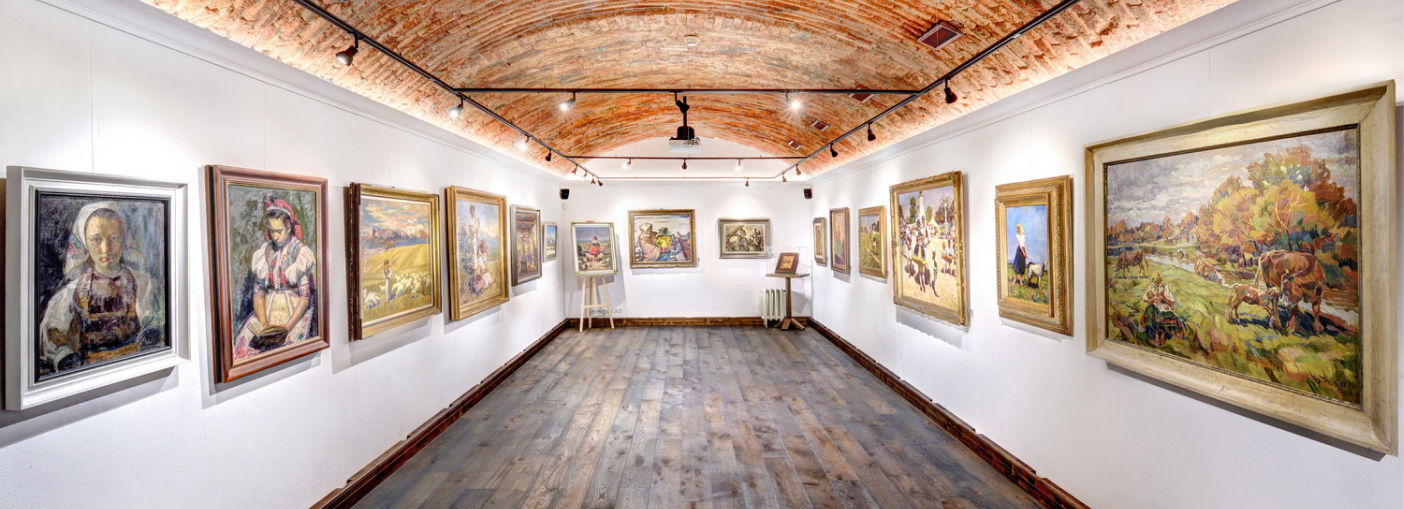
Teodor Jozef Mousson was born on 15th December 1887 in Högyészy, Hungary and died on 6th November 1946 in Trenčín. He associated the major part of his life and work with the eastern Slovakian town of Michalovce. He was even labelled as the “painter of the people and sun of the Zemplín region”. In 1905 – 1909 he studied at the University of Fine Arts in Budapest (professor E. Ballo). In 1910 he receives a scholarship from the Művészház society of fine artists and one year later he spends some time in the art colony in Nagybánya After 1911 he settles for good in Michalovce. Until 1919, Mousson worked as a teacher and in 1919 – 1930 as a freelance artist. In 1931 he moves to the villa in the village of Hrádok, near Michalovce, which was rented out to him for free by a patron of art and his admirer, count Sztáray. Mousson often consulted his work with Anna Lesznaiova, a painter with Europe-wide respect, a native of the nearby village of Nižný Hrušov (1885 – 1966), with whom he created several high-quality paintings under the influence of her French surrealism (Hrušov I., Hrušov II., Near the Church of Hrušov: 1929 – 1930). After cerebral bleeding, the whole left side of his body became paralysed (1942). Due to closeness of the war front and decline in Mousson’ s psychical health, the whole family moved to Bratislava (1944) and then to his son in Trenčín, where Mousson died. Mousson was a member of Kunstverein and the Union of Fine Arts of Slovakia. Although his work went through certain stages, Mousson predominantly concentrated on flashy narration of images from urban markets, customary traditions and folklore scenes as well as work-related genre themes. His pallet if filled with shiny pigments. He lay his colours in the canvas with swift, vivid and strong tactile thrusts of his brush. Gradually, he developed his typical trademark composition with centrally located group of females dressed in folk costumes viewed from behind. Mousson’s painting drawing from the richness of Zemplín folklore reaches its peak in the end of 1920s and the beginning of 1930s. In that period, his sense for tonal, colourful and light contrast is fully exposed, although it may sometimes come across as more flashy than efficient. Be that as it may, Mousson’s significance is to be perceived in the overlap of Upper Hungarian and Eastern Slovakian painting of the initial decades of the 20th century – although within the framework of the Barbizon school and the poetry of secessionist and impressionist painting he obtained in Nagybánya. Bibliography: Váross, M.: Slovenské výtvarné umenie 1918 – 1945. Bratislava 1960; Vízdalová-Haščáková, G.: Teodor Jozef Mousson, Košice 1979.
